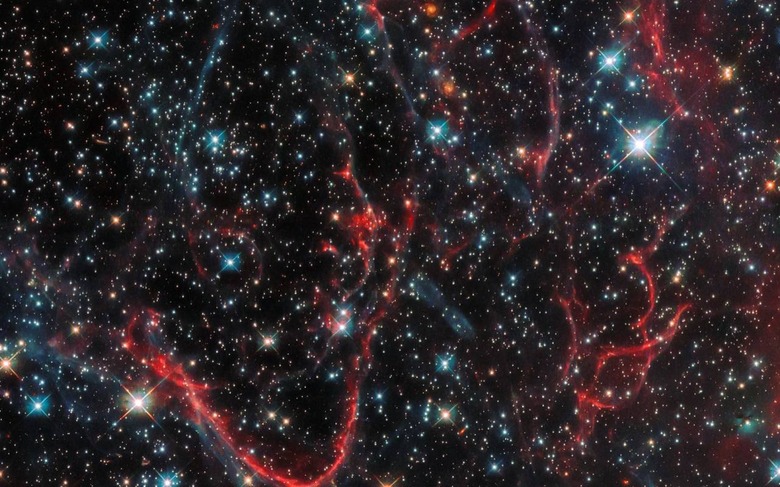Scientists Find A Deeper Mystery In Earth's Supernova Dust Bath
Earth may have spent the last 33,000 years drifting through what's left of huge supernova explosions, scientists have theorized, going deep into the ocean for evidence of one of the most mysterious known substances. Samples of iron-60, a radioactive isotope generated by supernovas, have been discovered on the ocean floor, a faint reminder of dying stars.
Iron-60's radioactivity makes it a natural time-keeper. Since it decays completely within 15 million years, scientists can be confident that any samples of it found on Earth – or, for that matter, deep in Earth's oceans – arrived within relatively recent history.
That's what Professor Anton Wallner, at the Australian National University (ANU), was counting on when he and a team of physicists went hunting for signs of the isotope that could've been gathered by Earth as it moves through the universe. Deep-sea sediment samples from two different locations were run through the ANU Heavy Ion Accelerator Facility's mass spectrometer. Each dates back 33,000 years.

Sure enough, there was iron-60 in the samples. Only at very low levels, but still with distributions that match our planet's recent transition through the local interstellar cloud (LIC). That would imply that the gas and dust which makes up the LIC could have been created by a long-passed supernova.
In the process, however, the scientists stumbled upon a mystery. While iron-60 was present, and matched Earth's recent movements, it also extends further back through the samples. Indeed, signs of the isotope were fairly consistently present throughout the whole 33,000 year period that each sample spanned, rather than spiking when the solar system first transitioned into the LIC.
That raises the question of just where the iron-60 comes from in space, not to mention what might have generated the cloud if it was not the byproduct of a past supernova. Its natural dating potential inherent in the radioactive decline gives a narrow window – in astronomical terms, at least – for identifying a possible origin.
"There are recent papers that suggest iron-60 trapped in dust particles might bounce around in the interstellar medium," Wallner highlights. That might indicate that the isotope being measured now actually dates back to even earlier supernova. As a result, "what we measure is some kind of echo," the nuclear physicist theorizes.
The results of the study were published in the Proceedings of the National Academy of Sciences of the USA. Future research into older samples could help identify the ebbs and flows of iron-60 levels, Wallner suggests.
